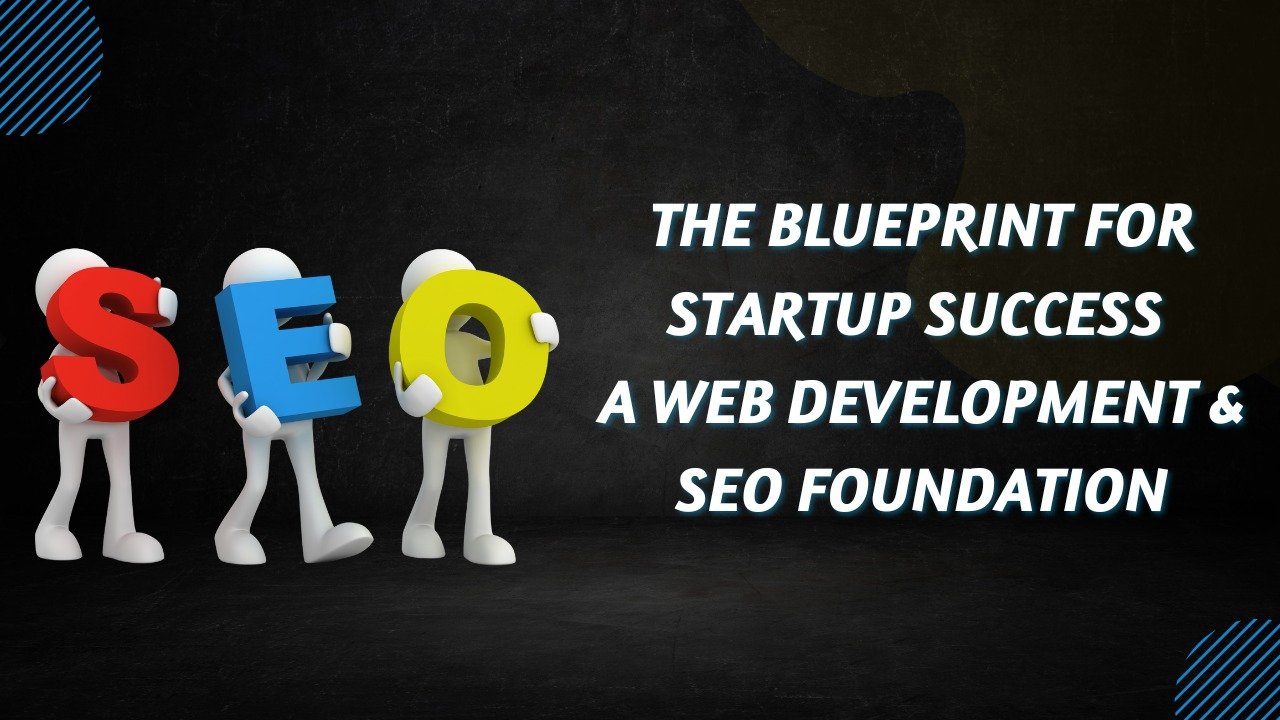The Blueprint for Startup Success: A Web Development & SEO Foundation

There’s an electric energy in the air when you’re building a startup. You’re fueled by a big idea, a passionate team, and the drive to change things. In this whirlwind of prototyping, pitching, and planning, it’s easy to see your website as just another box to tick—a digital business card to get you started.
But what if we told you that this is your single biggest mistake?
For a startup, your website isn’t a brochure. It’s your first storefront, your hardest-working salesperson, and the foundation of your entire digital identity. The choices you make during the web development phase don’t just affect how your site looks; they dictate whether anyone can find it in the first place.
This is where most startups stumble. They build a beautiful website that’s an empty room, wondering why no customers are walking through the door. The truth is, web development and Search Engine Optimisation (SEO) are not two separate tasks. They are two sides of the same coin, and for a startup, integrating them from day one is non-negotiable.
This is your blueprint to building a website that isn’t just built to look good, but is engineered for growth.
Why Your “Build Now, SEO Later” Approach is Costing You Everything
It’s a common story: A startup pours resources into a stunning website, launches it, and then a few months later asks, “Why aren’t we ranking on Google?” They then hire an SEO expert who delivers a brutal verdict: the entire site structure is wrong, the code is bloated, and the pages can’t be indexed properly. The result? A costly, time-consuming rebuild before they’ve even gained any momentum.
This “retrofitting” SEO is like trying to install the plumbing and electrical wiring in a house after the walls are already painted. It’s messy, inefficient, and incredibly expensive.
By baking SEO into the very fabric of your web development process, you build a asset that starts working for you from the moment you hit “publish.”
The Technical Foundation: Building a House That Google Can Find
Think of technical SEO as the concrete foundation of your house. If it’s cracked or poorly poured, nothing you build on top will be stable. During web development, your team must prioritise these elements:
1. Site Speed & Performance
In the age of instant gratification, a slow website is a dead website. Google uses page speed as a direct ranking factor, and users will abandon a site that takes more than a few seconds to load.
- Development Action: Optimise images (use WebP format), leverage browser caching, minify CSS and JavaScript code, and invest in quality hosting. Don’t let a beautiful, heavy theme cripple your performance.
2. Mobile-First Indexing
Google predominantly uses the mobile version of your content for indexing and ranking. If your site isn’t flawless on a smartphone, you’re invisible.
- Development Action: Ensure your web development team uses a responsive design framework. Test, test, and test again on various devices. The user experience on mobile must be seamless.
3. Clean Website Architecture & URL Structure
A messy, confusing site structure makes it hard for both users and Google’s bots (called “crawlers”) to navigate.
- Development Action: Create a logical hierarchy. A clean structure looks like: yoursite.com/services/service-a/ not yoursite.com/page1/index.php?id=43. Simple, descriptive URLs are essential for SEO.
4. SSL Certificate (HTTPS)
This is non-negotiable. HTTPS encrypts data between the user and your site, and Google gives a ranking boost to secure sites. It’s also a fundamental trust signal for your visitors.
- Development Action: Your web development team must install and properly configure an SSL certificate. Most hosting providers offer this for free.
The On-Page Blueprint: Content That Connects and Converts
Once the technical foundation is solid, you can build the walls and rooms—your content. This is where you speak directly to both your audience and search engines.
1. Strategic Keyword Research
You can’t rank for terms you don’t know about. Before writing a single line of code or a paragraph of content, you need to know what your potential customers are searching for.
- Action: Use tools like Google Keyword Planner, Ahrefs, or SEMrush to find relevant keywords with a decent search volume and manageable competition. Integrate these keywords naturally into your site’s copy.
2. Title Tags & Meta Descriptions
These are your shop window displays in the Google search results. A compelling title tag and meta description are what convince users to click on your link instead of the one below it.
- Development Action: Ensure your web development framework (like WordPress, Shopify, or a custom CMS) allows you to easily edit unique title tags and meta descriptions for every single page. This is a critical SEO task.
3. Header Tags & Content Structure
Content that is a massive “wall of text” is uninviting for readers and confusing for Google. Using proper header tags (H1, H2, H3) creates a clear content hierarchy.
- Action: Your H1 tag should be the main title of the page (and usually contain your primary keyword). Use H2s for main section breaks and H3s for sub-points. This makes your content scannable and SEO-friendly.
The Growth Engine: Building for the Future
A startup’s website is a living entity. It needs to grow and adapt. Your web development choices must support this evolution.
1. A Scalable CMS
Don’t build on a platform that you’ll outgrow in a year. Choose a content management system that is flexible and scalable.
- Recommendation: WordPress is a powerhouse for a reason—it’s incredibly flexible and SEO-friendly. Platforms like Webflow (external link) also offer excellent visual development for growing brands. The key is to avoid proprietary systems that lock you in.
2. Blog Integration from Day One
A blog is your most powerful tool for SEO. It allows you to create fresh content, target long-tail keywords, and establish thought leadership. Building it as an afterthought often results in a clunky, disconnected section of the site.
- Development Action: Integrate the blog seamlessly into the main site’s navigation and design during the initial web development phase. This ensures a consistent user experience and strong internal linking.
3. Local SEO Foundations (If Applicable)
If you have a physical location or serve a specific geographic area, local SEO is your golden ticket. This goes beyond standard web development but relies on it.
- Action: Ensure your web development sets up your schema markup (structured data) correctly, which helps Google understand your business information (like your address, phone number, and opening hours). A consistent NAP (Name, Address, Phone Number) across your site is crucial.
Your Launchpad to Success
For a startup, resources are precious. Every dollar and every hour counts. By fusing web development with SEO strategy from the very beginning, you aren’t just building a website; you are building your most efficient and scalable customer acquisition channel.
You are building a launchpad, not just a landing page.
If you’re ready to build a digital foundation that’s engineered for growth from the ground up, we specialise in creating startup websites that are both technically brilliant and strategically optimised for search.



